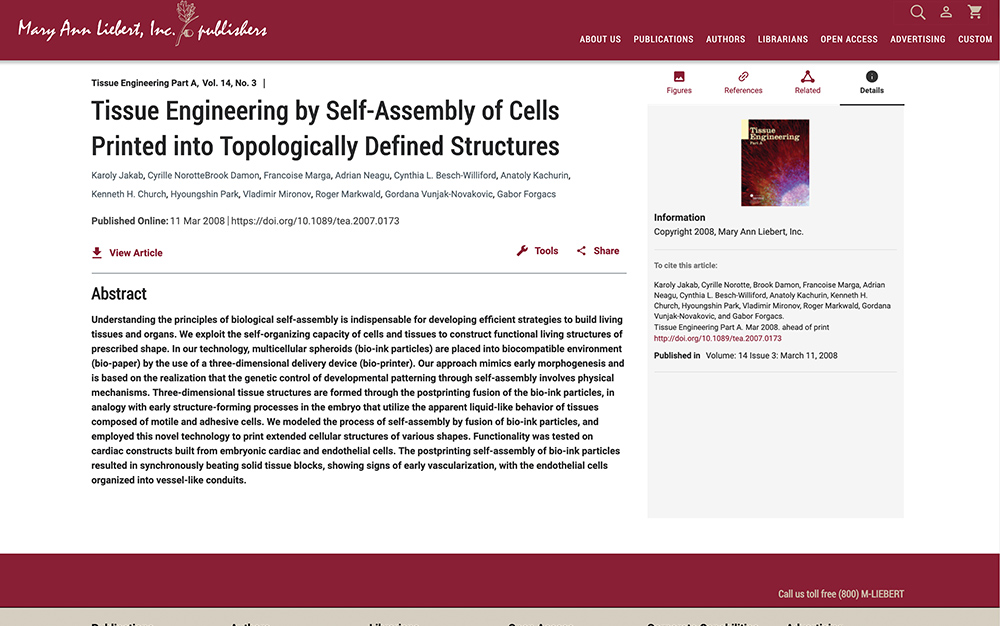Tissue engineering by self-assembly of cells printed into topologically defined structures
Publication Summary:
Understanding the principles of biological self-assembly is indispensable for developing efficient strategies to build living tissues and organs. We exploit the self-organizing capacity of cells and tissues to construct functional living structures of prescribed shape. In our technology, multicellular spheroids (bio-ink particles) are placed into biocompatible environment (bio-paper) by the use of a three-dimensional delivery device (bio-printer). Our approach mimics early morphogenesis and is based on the realization that the genetic control of developmental patterning through self-assembly involves physical mechanisms. Three-dimensional tissue structures are formed through the postprinting fusion of the bio-ink particles, in analogy with early structure-forming processes in the embryo that utilize the apparent liquid-like behavior of tissues composed of motile and adhesive cells. We modeled the process of self-assembly by fusion of bio-ink particles, and employed this novel technology to print extended cellular structures of various shapes. Functionality was tested on cardiac constructs built from embryonic cardiac and endothelial cells. The postprinting self-assembly of bio-ink particles resulted in synchronously beating solid tissue blocks, showing signs of early vascularization, with the endothelial cells organized into vessel-like conduits.
View Publication
